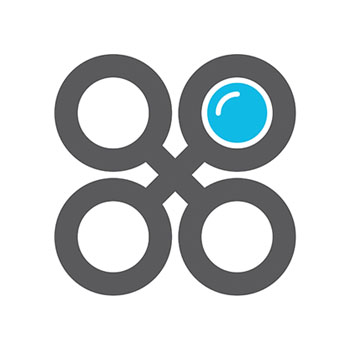Guest post by Michelle McKinney
At Bold Insight, we are definitely not leaders on public health. But we are practitioners of how to ask questions and get at the heart of what’s needed and desired across your customer base and employee base. You’re likely facing new challenges in the workforce with the Omicron variant of COVID, including emerging employee concerns, lots of moving parts, and evolving guidelines for businesses at a state and federal level. With this unpredictability, we offer ten questions to ask yourself, as leaders in your organization, to help successfully move forward and set the best path forward for your workforce.
Do your employees know the current “rules of engagement?”
With the current increases in cases, don’t make employees speculate if the December rules about in-office/telework are still in place. Spell it out for them as to what’s current NOW. If you are physically in the office, detail the current rules around masking, food and drink, and congregating in big meetings. Detail how to treat visits to third party locations such as customer or prospective customer site visits. Don’t force employees to guess or worry; make the best decisions you can and talk about them. Put timeframes or other conditions around them if needed.
Are you communicating those “rules of engagement” clearly, firmly, and kindly?
You should be communicating clearly and consistently across your leadership team. Ideally, you’re communicating in different forms (email, verbal). More communication is best; among other things, hearing a message multiple times makes the listener feel more confident and comfortable in what is being said. If something needs to change along the way, be sure to communicate the reason for the change.
Does your HR team or operations team understand what they are permitted to authorize or solve without further checking with other leaders?
If an employee takes the step to reach out for help or clarification, it will be frustrating all around to be unclear if HR and operations are empowered to act or not. Spend time up front defining powers of these HR and ops leaders so they can maximize help and certainty for whomever needs it. Consider areas such as financial support and paid or unpaid time off exceptions and permissions.
Do your employees know how to get operational help with your insurance plan or payroll reporting?
These are your company’s programs, you own them. Let’s help employees with the bureaucracy as needed — don’t exacerbate strains here right now. Do they know how and from whom to get help? Have you written an FAQ or otherwise a static page that can easily be found on your intranet with clarity on effective dates that employees can find and use? In addition, is there clarity on the person or help desk who can help them?
If someone in your workforce tests positive for COVID, how will you communicate that to everyone else? How and when can that person return to work? And does everyone know this procedure?
Increased cases mean an increased chance that someone in your team will test positive for COVID. That moves things out of the abstract and hypothetical into the actual and tactical. When someone tests positive for COVID in your office, the U.S. Occupational Safety and Health Administration (OSHA) has sample communication tools you can use to notify your team.
For the benefit of all team members, it’s similarly important to set the stage as to how the return to work will go. You will want to be mindful of both employment regulations and getting accurate health information from your team member who is recovering from a COVID diagnosis. There is helpful guidance from the U.S. Equal Employment Opportunity Commission (EEOC) on how you can seek health information from your employees. Additionally, The Centers for Disease Control (CDC) has information on return-to-work guidance. Your state, county, or city may also have employment and public health considerations available for you to use.
Are there short-term changes to reimbursements or paid time off for testing? Is it communicated clearly and uniformly?
There is no need for any whiff of favoritism in the workplace, where people feel like some are getting benefits that are not uniformly available or known. Be clear and upfront about new approaches you are now using to support your employees. Also, you should not miss a chance to provide employees with confidence to pursue what they need with company support. Spell it out up front and put timeframes around it if needed. (ex: “This practice will be in place through January 31, and will be re-evaluated at that time as circumstances warrant.”)
Because not everyone is an “employee,” do you have good communication and plans for other members of your workforce, such as third-party service providers, interns, contractors, volunteers?
Do not forget these other people who are part of the team but may not be as front-of-mind as your payrolled employees. You will want to coordinate well with the employers of your contractors, for example, to mitigate any confusion.
Is there anything your upcoming new hires need to know that they may not be expecting?
January is generally a peak month for bringing on new hires. Don’t forget that the onboarding message around procedures to new hires that you gave in November and December may no longer be valid. Make sure to be proactive to find those team members and communicate any changes they should expect. Review and update all new hire messaging where appropriate.
Do you have an external guidepost on how you’re doing things? Does your workforce know what that is?
If your touchpoint is “we follow CDC recommendations” or “we follow Illinois Department of Public Health recommendations” or “we are closing down operations/hours/business needs until XX occurs in our community” then say that to your team. That gives them some empowerment to look at those external guideposts to understand and participate in those metrics and measures. Empowerment is a good connective tissue across your team right now, where feasible.
What’s important to your company? How do your COVID practices sit within that?
Above all, this is where company cultural guiding principles can really be leveraged. COVID will not go on forever; your workforce should be able to connect the dots to your company’s mission and vision. The feeling of being respected and valued as part of an employer’s core principles will last well past the time that this latest COVID surge ends.
About the author
Michelle is a seasoned human resources and operational leader who thrives at taking on tough challenges. Her background is in compensation, benefits, people analytics, HR systems, processes, and services, globally. Michelle’s career has mainly been with technology companies, both as a people leader in-house and externally as a consultant. She has had successes at transformational initiatives including M&A due diligence and integration, office launches, and change management planning. Michelle has a BA in Economics from the University of California, San Diego.
Can we help your team?

